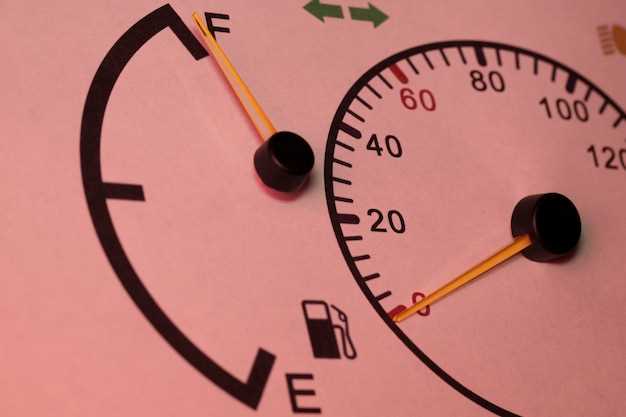
What to Do If Your Car Won’t Start Due to Fuel Issues
- Arthur Rodriquez
- 0
- Posted on

When you turn the key in the ignition and your car won’t start, it can be frustrating. One of the first areas to investigate is the fuel system, as issues related to fuel delivery often cause a no-start condition. Identifying whether it’s a fuel issue is crucial in diagnosing the problem effectively.
There are several potential fuel-related issues that could prevent your car from starting. These may include a clogged fuel filter, a failing fuel pump, or even a lack of fuel in the tank. If you suspect a fuel issue, checking these components can provide valuable insights into why your vehicle is experiencing a no-start scenario.
Additionally, understanding the symptoms of fuel-related problems can help you determine the next steps. A sputtering engine, unusual noises from the fuel tank, or the smell of gasoline can all indicate that fuel delivery is compromised. Recognizing these issues early on not only saves time but also minimizes potential damage to your vehicle’s engine.
Identifying Signs of Fuel System Failure

When your car experiences starting problems, one of the critical areas to inspect is the fuel system. Potential no signs of fuel delivery issues can often pinpoint the root cause of the problem.
A common indicator of a fuel system failure is the no start condition, where the engine turns over but does not ignite. This can suggest an issue with the fuel pump, which is responsible for sending fuel from the tank to the engine. If the pump is malfunctioning, the engine may not receive the necessary fuel supply.
Another sign of fuel system problems is a noticeable decrease in engine performance. If your vehicle hesitates or struggles to accelerate, it may indicate that the fuel system is not delivering the appropriate amount of fuel. In such cases, the fuel filter could be clogged, preventing adequate fuel flow.
Additionally, look for symptoms such as unusual engine noises, particularly a whining sound from the fuel tank. This noise often signals that the fuel pump is under strain, attempting to operate despite an underlying issue.
Visual cues can also help in diagnosing fuel system failure. Leaks around the fuel tank or fuel lines may signal serious issues that require immediate attention. Any signs of liquid pooling or strong fuel odors should not be ignored, as these can indicate a significant risk of fire and necessitate urgent repairs.
Finally, check your dashboard for warning lights related to the fuel system. Many modern vehicles contain diagnostic systems that will alert you to problems affecting fuel delivery, providing a crucial early warning of potential failures.
In summary, recognizing these no signs of fuel system failure is essential for diagnosing starting issues with your vehicle effectively. Prompt identification and repairs can save you from larger problems down the road.
Steps to Diagnose Fuel Pump Functionality

When your car won’t start, a fuel pump issue might be the culprit. Here are the steps to diagnose its functionality:
- Check for Fuel Pressure:
- Locate the fuel pressure gauge and attach it to the fuel rail.
- Turn the ignition key to the “on” position without starting the engine.
- Read the pressure. If it is within the manufacturer’s specifications, proceed to the next step.
- If there is no pressure, it indicates a potential issue with the fuel pump.
- Listen for Pump Operation:
- Turn the ignition key to the “on” position again.
- Listen for a humming sound from the fuel tank, which indicates the pump is working.
- If you hear no sound, the fuel pump may not be functioning properly.
- Inspect Electrical Connections:
- Check the fuel pump fuse in the vehicle’s fuse box.
- Replace any blown fuses that may be causing the issue.
- Examine the wiring harness for any signs of corrosion or damage.
- Ensure all connections are secure. A loose connection can prevent the pump from starting.
- Test the Fuel Pump Relay:
- Locate the fuel pump relay in the fuse box.
- Swap it with a similar relay to see if the issue is resolved.
- If the car starts, the relay is likely faulty and needs replacement.
- Check for Fuel Blockages:
- Inspect the fuel filter for clogs. A blocked filter can restrict fuel flow.
- Replace the filter if it is dirty or has not been changed recently.
- Examine the fuel lines for any leaks or physical damage that may cause blockages.
- Perform a Final Test:
- After checking all components, attempt to start the vehicle again.
- If it still won’t start, the issue may lie within the fuel pump itself.
- In this case, consider consulting a professional mechanic for further diagnosis.
By following these steps, you can effectively determine whether the fuel pump is causing the no-start issue in your vehicle.
How to Check Fuel Lines and Filters for Blockages
When your car won’t start, one potential culprit could be a blockage in the fuel lines or filters. These components play a crucial role in delivering fuel to the engine. To ensure there are no fuel issues, follow these steps to check for blockages.
Begin by visually inspecting the fuel lines. Look for any signs of damage such as cracks, leaks, or kinks. Pay special attention to areas where the fuel line bends, as these are common spots for blockages to occur. If any visible damage is detected, the fuel line may need to be replaced.
Next, locate the fuel filter. Its location can vary depending on the vehicle, so consult your owner’s manual if needed. Once found, check for any signs of sediment buildup or dirt on the exterior. To determine if the filter is causing an issue, you can disconnect it from the fuel line. Be careful, as there may be some residual fuel. After removal, attempt to blow air through the filter; if air cannot pass through freely, the filter is blocked and should be replaced.
If you suspect that the fuel lines are blocked, you may need to inspect them further. Use a fuel line cleaning kit to clear any obstructions. Additionally, you can disconnect the fuel line at both ends and use compressed air to blow through it. This process will help remove any debris that may be restricting fuel flow.
Finally, after checking the fuel lines and filter for blockages, ensure all connections are secure before attempting to start the car again. If the problem persists, the issue could be related to other components in the fuel system, requiring further investigation. Regular maintenance of fuel lines and filters can prevent such issues, ensuring your vehicle runs smoothly.